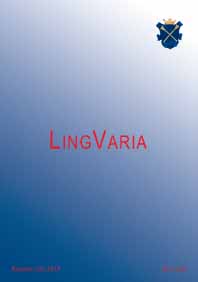JAK BADAĆ SAMOGŁOSKI METODAMI AKUSTYCZNYMI? PROPOZYCJA METODY OPARTEJ NA WZGLĘDNYCH CZĘSTOTLIWOŚCIACH FORMANTOWYCH ORAZ MODELU SAMOGŁOSEK PODSTAWOWYC
How to study vowels using acoustic methods? A proposal of a method based on relative formant frequencies and the cardinal vowels model
Author(s): Piotr RybkaSubject(s): Language and Literature Studies
Published by: KSIĘGARNIA AKADEMICKA Sp. z o.o.
Keywords: phonetics; vowel; acoustic phonetics; articulatory phonetics; articulation; formant; cardinal vowels
Summary/Abstract: The first part of the paper proposes a method of studying (or, more precisely, of recognizing) oral vowels, using the so-called relative formant frequencies. First, we describe the traditional method of acoustic study of oral vowels, together with its limitations. Next, we introduce the assumptions of the proposed method where, unlike in the traditional approach, a set of fixed models is used. The comparison, instead of being reduced to establishing whether two sets of vowels match, requires a distance to be calculated between each vowel and each model. The paper introduces the notion of relative formant frequency (denoted f′) which was used in the comparisons to minimize the impact of individual articulatory variation on the outcome of the analysis. It was defined as the proportion between, on the one hand, the difference between the absolute frequency of the given formant, and its minimal value observed in actual pronunciations, and on the other hand, the difference between the minimal and the maximal frequency of the formant, as observed in pronunciations. In order to establish the f′ of model vowels, we used the cardinal vowels pronounced by several British phoneticians (including Daniel Jones).
Journal: LingVaria
- Issue Year: 2014
- Issue No: 18
- Page Range: 69-88
- Page Count: 20
- Language: Polish

